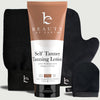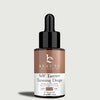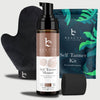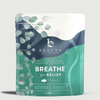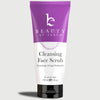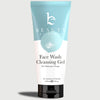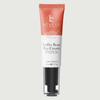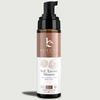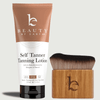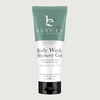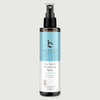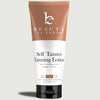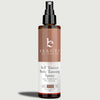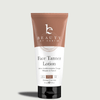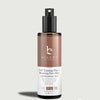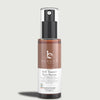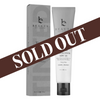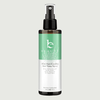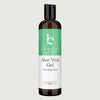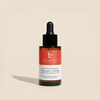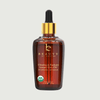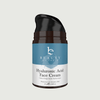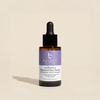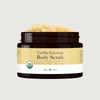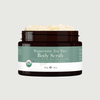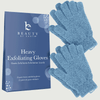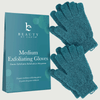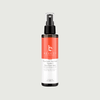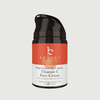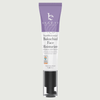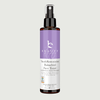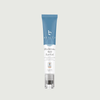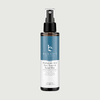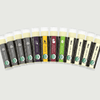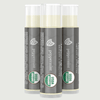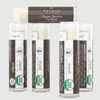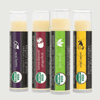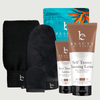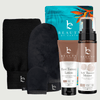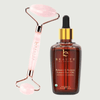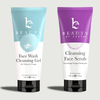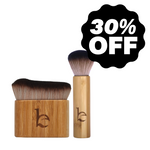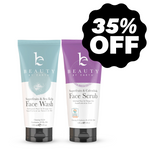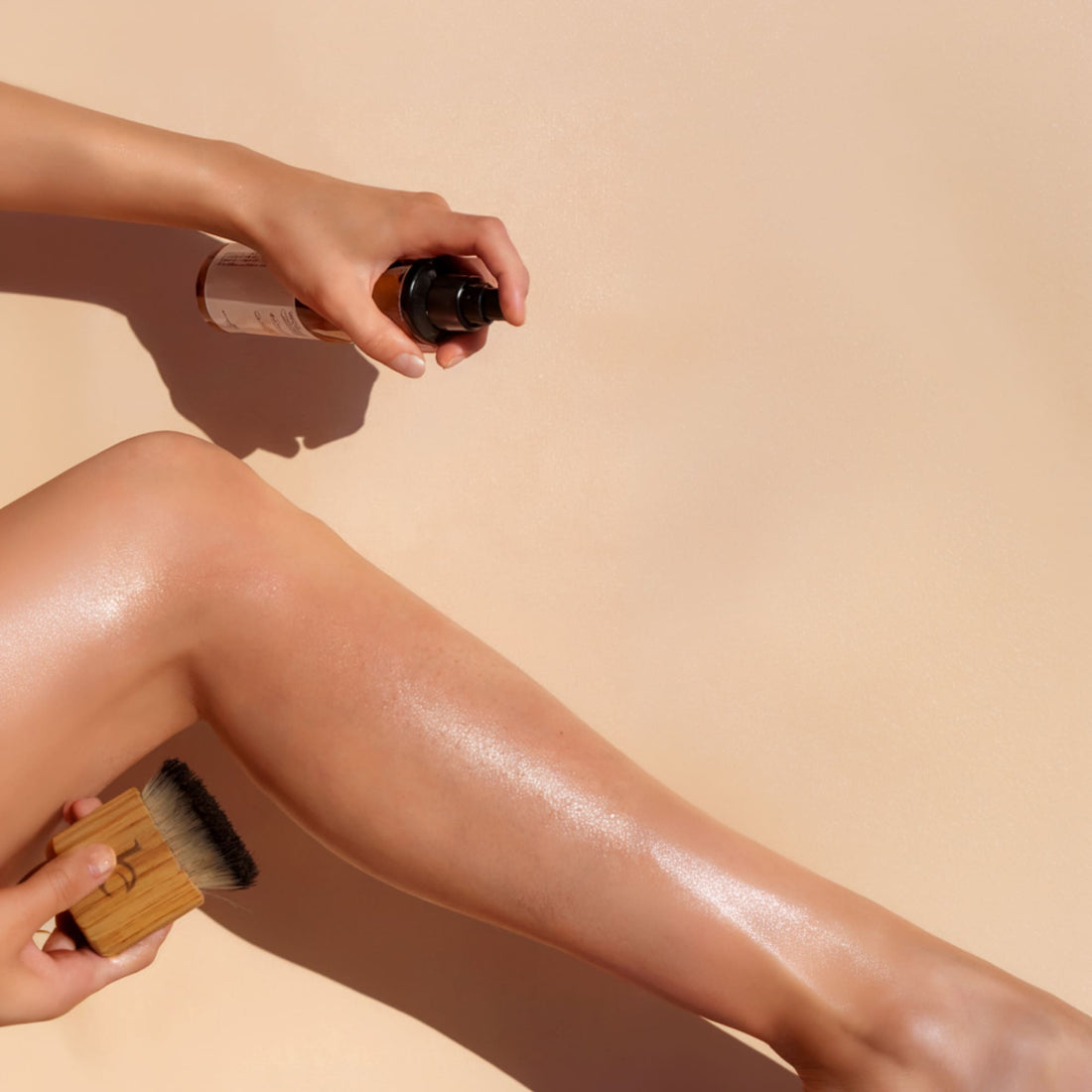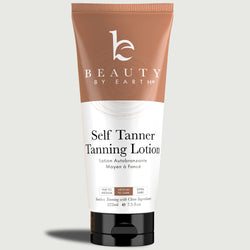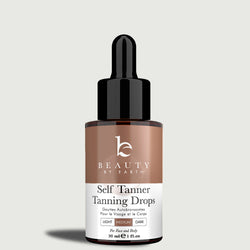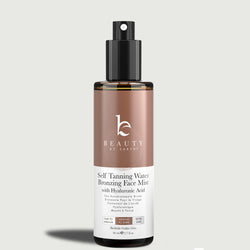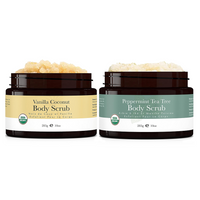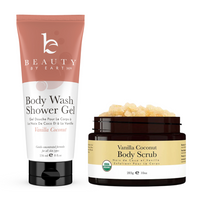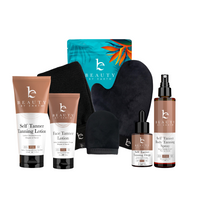Most of us have been there before: you want to look tan but don’t want the risks that come with exposing your skin to harmful UV rays. This is where self-tanners come in! They’re quick and easy ways to fake a year’s worth of beach trips without actually having to go through the damaging process. Although many self tanners are packed with skin-healthy ingredients, they all too often slip in some seriously harmful ones as well. These bad boys can cause health concerns and skin irritation. But what are these dangerous ingredients hiding in your sunless tanner? Join us as we unpack 7 worst ingredients in self tanner.
Wait, aren't chemicals in tanners regulated?
While many of us assume that the ingredients in our products have been proven safe by FDA, that couldn't be farther from the truth. In the USA, federal regulators largely leave the question of ingredient safety in the hands of businesses, not scientists. "Of more than 10,000 chemicals used to formulate cosmetics, just 11 have ever been banned or restricted by the federal Food and Drug Administration. By contrast, the FDA, the Environmental Protection Agency and the Consumer Product Safety Commission have broad authority to ensure the safety of chemicals in other consumer products." - ewg.org That's why we believe it's critical to know that what you're putting on your skin is safe.
1. Worst Ingredients in Self Tanner: Parabens
These chemicals are primary preservatives that keep bacteria at bay and extend the shelf life of products. You’ll find Parabens in everything from shampoos, lotions, cleansers, body washes, facial scrubs, and self tanners. While shelf life is good, the side effects from parabens are definitely not!
Why Avoid Parabens in Your Self Tanner
Parabens are hormone disruptors, which means they mimic estrogen in the body. This can interfere with delicate hormonal balances and potentially lead to early puberty or even cancer.
“What worries public health advocates is that while individual products may contain limited amounts of parabens within safe limits set by the U.S. Food & Drug Administration (FDA), cumulative exposure to the chemicals from several different products could be overloading our bodies and contributing to a wide range of health problems. […] Research has shown that the perceived influx of estrogen beyond normal levels can in some cases trigger reactions such as increasing breast cell division and the growth of tumors.” – Scientific American
Campaign for Safe Cosmetics (CSC) notes, “Of greatest concern is that parabens are known to disrupt hormone function, an effect that is linked to increased risk of breast cancer and reproductive toxicity. Parabens mimic estrogen by binding to estrogen receptors on cells.”
Don’t just look at the ingredient list for parabens – they often go by other names on labels. Also watch out for other preservatives that end with -paraben—such as methylparaben, propylparaben, butylparaben.
What to look for on the label:
Ethylparaben, butylparaben, methylparaben, propylparaben, isobutylparaben, isopropylparaben, other ingredients ending in –paraben.
Safety Standards in Self Tanners for Parabens
The FDA doesn’t set a standard for safe levels of parabens in products such as self tanners—so the amount found in these products is really up to the manufacturer. Although parabens are being phased out of self tanners, you can still find them in many popular brands. This is why it’s so important to read the label before deciding on a brand.
2. Worst Ingredients in Self Tanner: Drying Alcohol (Ethanol)
Many self tanners contain alcohol because it’s a great solvent for dyes. And, yeah, dyes are a BIG part of how most self tanners achieve the tan (as your white towels know all too well). The problem is, it can cause skin irritation and cell damage. (But remember, not all alcohols are alike! For instance, stearyl alcohol is a fatty alcohol that is commonly used in skincare as an emollient, emulsifier, or thickener. It's derived from natural sources such as coconut oil or palm oil, although it can also be synthetically produced.)
Why avoid alcohol in your self tanner
Alcohol has been known to dry out the skin by removing water from the top layer of skin cells. This can lead to cracking, chapping, flaking…and even bleeding! See what I did there? Blood in self tanner is never a good thing. It may cause you to look like an extra on The Walking Dead.
What to look for on the label:
Watch out for Ethanol.
2. Worst Ingredients in Self Tanner: Mineral Oil
Self tanner brands use mineral oil to help their formulas make skin soft and supple. Sounds great, right? Sure, the only problem is the truckload of negative side effects. You’ll see them in many popular formulas, even ones claiming to be filled with only “clean ingredients.”
Why Avoid Mineral Oil in Your Self Tanner
Mineral oil is derived from petroleum so it can clog pores and cause acne breakouts. That’s because it doesn’t soak into the skin. Instead, it creates a waxy layer on top of the skin’s surface which makes you look shiny. It’s also a cheap filler and skin-coating ingredient that can clog the skin’s pores and cause acne breakouts, eye irritation, skin rashes, itchiness, or scaliness.
What to look for on the label:
Look for names like Mineral oil or liquidum paraffinum.
3. Worst Ingredients in Tanner: Fragrance
Ah, fragrance. We all love a sweet, gentle scent. And when it comes to most stinky self tanner formulas, we’d love a nice scent all the more! Unfortunately, “fragrance” is really an umbrella term used by companies to conceal a laundry list of uglies. As the Breast Cancer Prevention Partner notes in their report on toxins in fragrances, "a gaping federal labeling loophole combined with a $70 billion self-regulated fragrance industry is creating a buyer beware situation for consumers."

Why Avoid Fragrance in Your Self Tanners
On the product label, you’ll see “fragrance.” But what many companies are actually using is a chemical cocktail that can include all sorts of ingredients, such as 1,4-dioxane, Benzene, Benzyl chloride, Beta-myrcene, Diethyl phthalate (DEP), and Toluene.
Often these chemicals are absorbed into the body and can cause a variety of possible reactions including headaches, dizziness, hormone disruption, and allergic reactions.
What to look for on the label:
Look for names like fragrance, perfume, or parfum.
4. Worst Ingredients in Self Tanner: Synthetic Dyes and Pigments
Dyes are the most common coloring agent used in self tanners. These are sometimes natural but can also be artificial or synthetic dyes. Most likely, you’ll find dyes paired with DHA to enhance and deepen that bronzed babe look. These dyes may be derived from any number of petrochemicals and can cause skin irritation such as redness, itchiness and swelling.
Common Dyes In Self Tanners
You’ll come across two major categories of dyes used in self tanners: 1) Para Red (CI 16220) and 2) FD&C colorants. Coal Tar Dyes, FD&C Red 40, FD&C Yellow 5, and FD&C Blue 1. Cosmetic dyes are linked to some serious side effects, as well as skin irritation, itching, and rashes.
Safety Standards for Self Tanner Dyes
All color additives (hear "dyes") must be approved by the FDA before being sold to consumers. While this sounds comforting on its face, it's actually a hollow standard. For instance, the FDA's own website states that some dyes approved for use in cosmetics, "may cause itching and hives in some people" (FDA.gov). In other words, it’s best to just steer clear of dyes all together!
What to look for on the label:
Look for names of colors like FD&C Red 40, FD&C Yellow 5, and FD&C Blue 1.
5. Worst Ingredients in Self Tanner: Formaldehyde
Yup, you heard us right. The same stuff you used in high school to preserve lab experiments is put in sunless tanning products. Found in many hair straightening products, formaldehyde is also an active ingredient in some sunless tanners. Although the chemical helps darken skin quickly due to its “oxidizing” property, it can cause reactions if exposed to the skin for too long.
Why Avoid Formaldehyde in Your Self Tanner
Formaldehyde is a known carcinogen that is used in many beauty products for its antimicrobial properties. It’s found in a lot of self-tanners and can be absorbed into the body and cause: eye irritation, headaches, nausea, and breathing problems.
Although most self tanner companies claim they don’t use formaldehyde in their products anymore, you’ll still find it listed as an ingredient for other beneficial purposes such as preserving the product longer or preventing microbial growth.
Safety standards for Formaldehyde in Fake Tanning Products
Europe lists formaldehyde as a Category 3 carcinogen and cannot be used in products that come into direct contact with skin. It's also been linked to childhood asthma and other health issues. In the United States, however, the FDA limits its use to 0.2% of formula weight in leave-on products and 0.1% in rinse-off products. To us, that’s still too much of a bad ingredient. Better to just stay away from Formaldehyde entirely while you fake tan!
What to look for on the label:
Look for names of like Formalin, Formic aldehyde, Methanediol, Methanal, Methyl aldehyde, Methylene glycol, Methylene oxide.
6. Worst Ingredient in Self Tanner: Hydroquinone
Although hydroquinone is a skin-lightening agent and prevents the production of melanin, it is sometimes found in sunless tanners to prevent skin from looking orange. While that’s all well and good, Hydroquinone isn’t a good dude. It’s been linked to cancer in lab tests when exposed to sunlight.
Why Avoid Hydroquinone in Your Self Tanners
Studies have shown that hydroquinone can be toxic and cause: eye and liver problems, allergic reactions and rashes. Other side effects include irritation, redness, and even allergic reactions such as swelling around the face and mouth.
This is why many countries have banned hydroquinone because of its nasty side effects. Although manufacturers claim they aren’t putting dangerous levels of hydroquinone in their formulations, we remain skeptical.
What to look for on the label:
Look for Hydroquinone on your labels.
7. Worst Ingredient in Self Tanner: Lead Acetate
Lead Acetate was once used in self tanners to deepen the color of your skin. The problem is, we now know that lead can cause: damage to the nervous system and kidneys, cognitive impairment and infertility
Why Avoid Lead Acetate in Your Self Tanner
Lead Acetate can cause some serious side effects such as: seizures, kidney damage, gout and reproductive harm. This is why many countries such as Canada and France have banned it because of its high level of toxicity. Thankfully the FDA has ruled against its use. If you do see this ingredient listed on a product – RUN!
What to look for on the label:
Look for Lead Acetate on your labels. When you find it, ditch that fake tan bottle, babe!
Skip the Sketchy Tanners and Go for Natural Ingredients
Phew! I hope you enjoyed our round-up of the worst ingredients in tanner! Instead of using self tanners that might contain any one of the ingredients mentioned above, reach for tanners that contain naturally derived ingredients. Beauty by Earth’s Self Tanner Body Lotion, for instance, overflows with natural and organic ingredients like Shea butter, coconuts, cranberries, and aloe vera. Because honestly, tanning shouldn’t be a game of Russian roulette. Use ingredients you trust and dump the rest for healthy fake tans!
Remember to do your research before buying any self tanner! Because not all of them are created equal!
ADDITIONAL READING:

